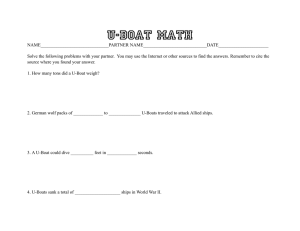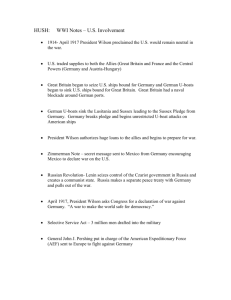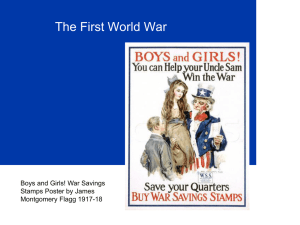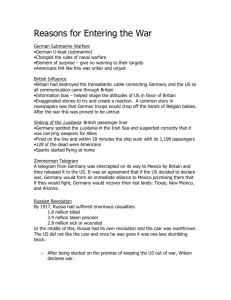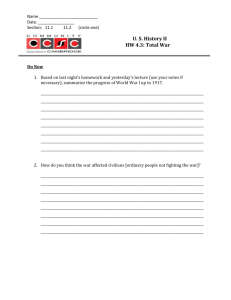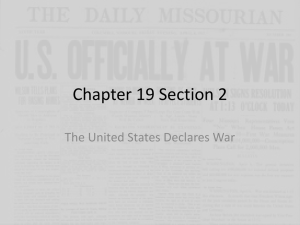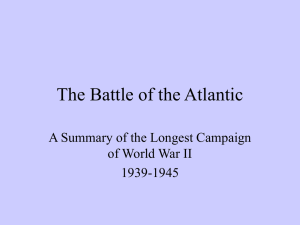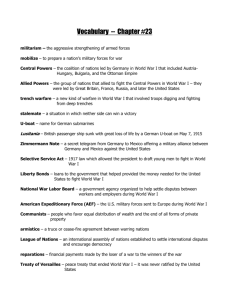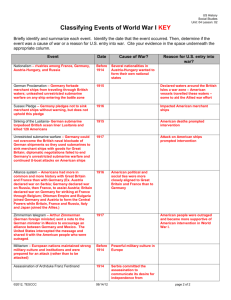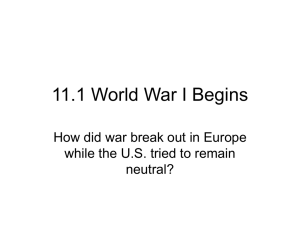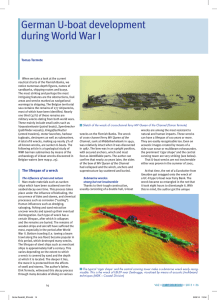Submarines - IB SL History
advertisement
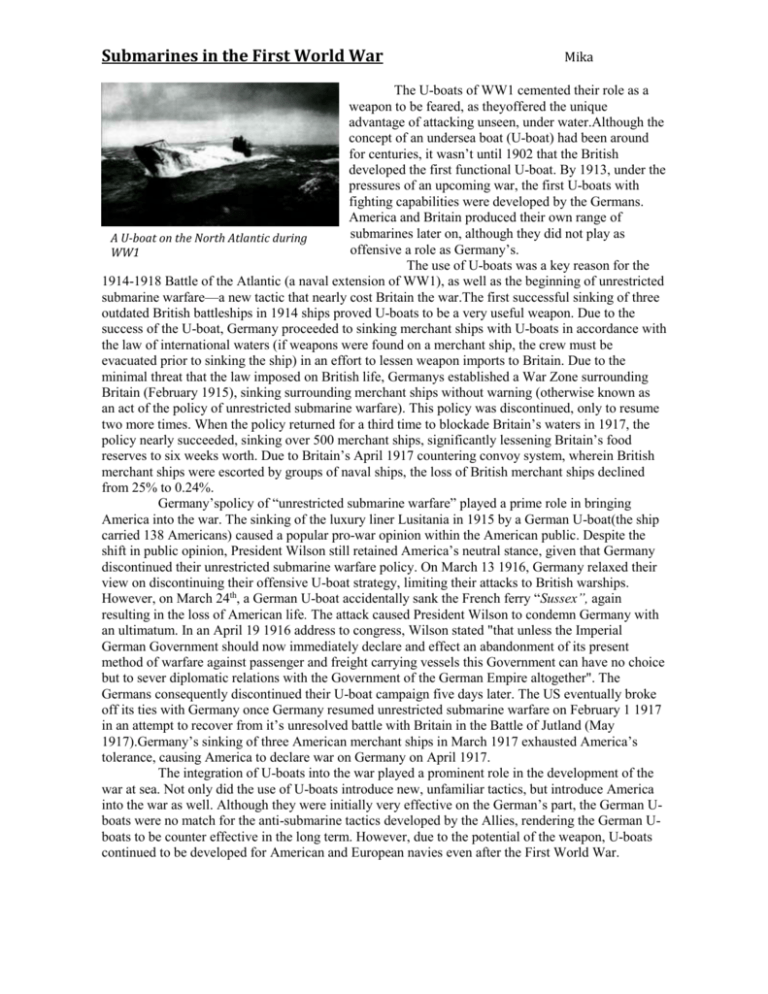
Submarines in the First World War Mika The U-boats of WW1 cemented their role as a weapon to be feared, as theyoffered the unique advantage of attacking unseen, under water.Although the concept of an undersea boat (U-boat) had been around for centuries, it wasn’t until 1902 that the British developed the first functional U-boat. By 1913, under the pressures of an upcoming war, the first U-boats with fighting capabilities were developed by the Germans. America and Britain produced their own range of submarines later on, although they did not play as A U-boat on the North Atlantic during offensive a role as Germany’s. WW1 The use of U-boats was a key reason for the 1914-1918 Battle of the Atlantic (a naval extension of WW1), as well as the beginning of unrestricted submarine warfare—a new tactic that nearly cost Britain the war.The first successful sinking of three outdated British battleships in 1914 ships proved U-boats to be a very useful weapon. Due to the success of the U-boat, Germany proceeded to sinking merchant ships with U-boats in accordance with the law of international waters (if weapons were found on a merchant ship, the crew must be evacuated prior to sinking the ship) in an effort to lessen weapon imports to Britain. Due to the minimal threat that the law imposed on British life, Germanys established a War Zone surrounding Britain (February 1915), sinking surrounding merchant ships without warning (otherwise known as an act of the policy of unrestricted submarine warfare). This policy was discontinued, only to resume two more times. When the policy returned for a third time to blockade Britain’s waters in 1917, the policy nearly succeeded, sinking over 500 merchant ships, significantly lessening Britain’s food reserves to six weeks worth. Due to Britain’s April 1917 countering convoy system, wherein British merchant ships were escorted by groups of naval ships, the loss of British merchant ships declined from 25% to 0.24%. Germany’spolicy of “unrestricted submarine warfare” played a prime role in bringing America into the war. The sinking of the luxury liner Lusitania in 1915 by a German U-boat(the ship carried 138 Americans) caused a popular pro-war opinion within the American public. Despite the shift in public opinion, President Wilson still retained America’s neutral stance, given that Germany discontinued their unrestricted submarine warfare policy. On March 13 1916, Germany relaxed their view on discontinuing their offensive U-boat strategy, limiting their attacks to British warships. However, on March 24th, a German U-boat accidentally sank the French ferry “Sussex”, again resulting in the loss of American life. The attack caused President Wilson to condemn Germany with an ultimatum. In an April 19 1916 address to congress, Wilson stated "that unless the Imperial German Government should now immediately declare and effect an abandonment of its present method of warfare against passenger and freight carrying vessels this Government can have no choice but to sever diplomatic relations with the Government of the German Empire altogether". The Germans consequently discontinued their U-boat campaign five days later. The US eventually broke off its ties with Germany once Germany resumed unrestricted submarine warfare on February 1 1917 in an attempt to recover from it’s unresolved battle with Britain in the Battle of Jutland (May 1917).Germany’s sinking of three American merchant ships in March 1917 exhausted America’s tolerance, causing America to declare war on Germany on April 1917. The integration of U-boats into the war played a prominent role in the development of the war at sea. Not only did the use of U-boats introduce new, unfamiliar tactics, but introduce America into the war as well. Although they were initially very effective on the German’s part, the German Uboats were no match for the anti-submarine tactics developed by the Allies, rendering the German Uboats to be counter effective in the long term. However, due to the potential of the weapon, U-boats continued to be developed for American and European navies even after the First World War. Submarines in the First World War Mika Works Cited Denger, Mark J. "Submarine Warfare in World War I." Index. California Center for Military History. Web. 07 Sept. 2011. <http://www.submarinehistory.com/WWI.html>. "First World War.com - Encyclopedia - Sinking of the 'Sussex'" First World War.com - A Multimedia History of World War One.Web. 07 Sept. 2011. <http://www.firstworldwar.com/atoz/sussex.htm>. "Searchlight U-boat Warfare 1914-1918." Welcome to the Imperial War Museum. Imperial War Museum. Web. 07 Sept. 2011. <http://www.iwm.org.uk/searchlight/server.php?show=nav.24361>. "Trenches on the Web - Armory: U-boats." World War I - Trenches on the Web. Web. 07 Sept. 2011. <http://www.worldwar1.com/arm012.htm>. "U-Boats and the Lusitania." ~Mountain City Elementary School - Mountain City, Tennessee~.Web. 07 Sept. 2011. <http://www.mce.k12tn.net/ww1/lusitania.htm>. "World War One, The Submarine." World History International: World History Essays From Prehistory To The Present.World History Project, USA.Web. 07 Sept. 2011. <http://history-world.org/world_war_i_and_the_submarine.htm>.
